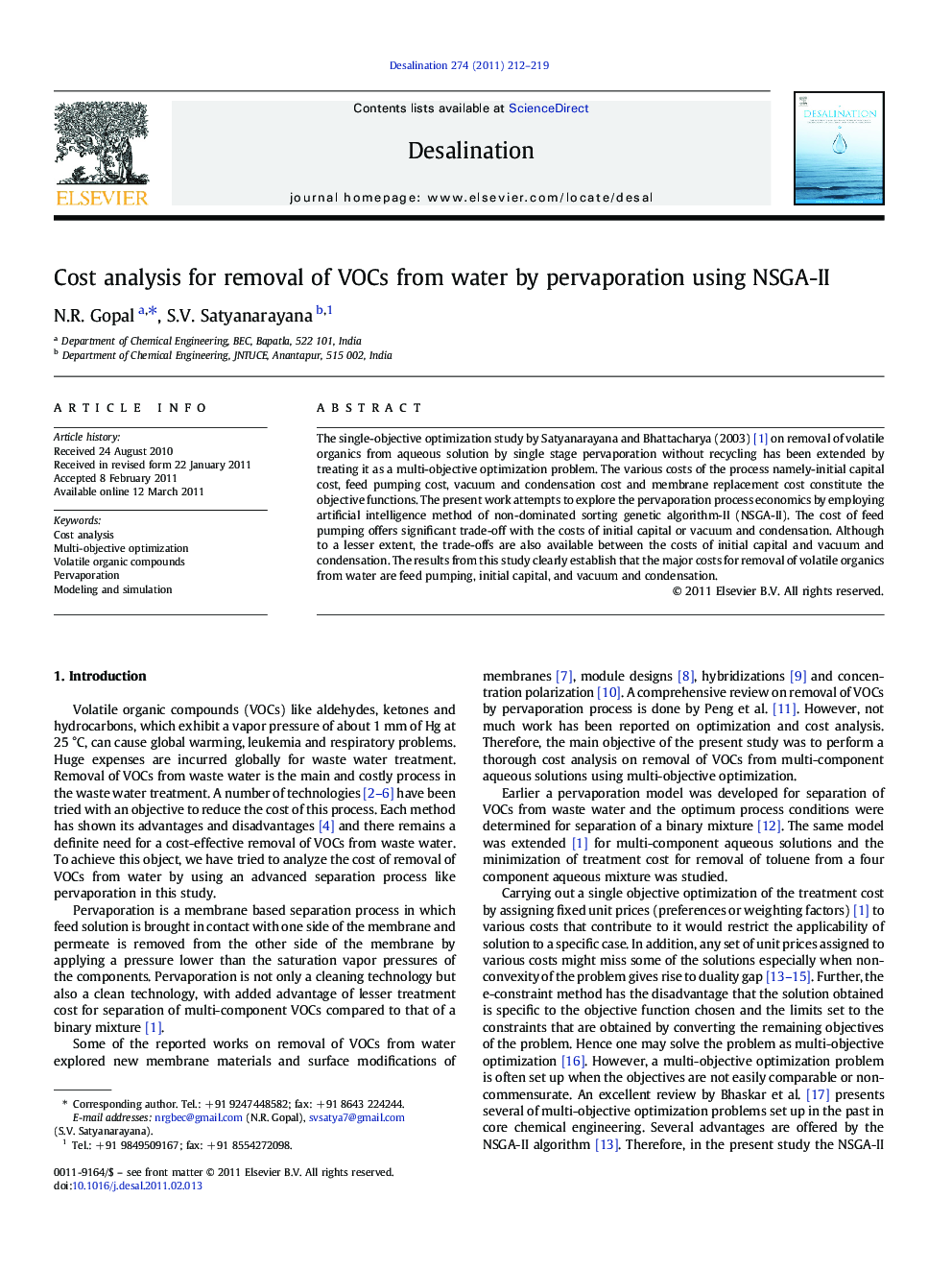| Article ID | Journal | Published Year | Pages | File Type |
|---|---|---|---|---|
| 625129 | Desalination | 2011 | 8 Pages |
The single-objective optimization study by Satyanarayana and Bhattacharya (2003) [1] on removal of volatile organics from aqueous solution by single stage pervaporation without recycling has been extended by treating it as a multi-objective optimization problem. The various costs of the process namely-initial capital cost, feed pumping cost, vacuum and condensation cost and membrane replacement cost constitute the objective functions. The present work attempts to explore the pervaporation process economics by employing artificial intelligence method of non-dominated sorting genetic algorithm-II (NSGA-II). The cost of feed pumping offers significant trade-off with the costs of initial capital or vacuum and condensation. Although to a lesser extent, the trade-offs are also available between the costs of initial capital and vacuum and condensation. The results from this study clearly establish that the major costs for removal of volatile organics from water are feed pumping, initial capital, and vacuum and condensation.
Research Highlights► The present study reveals that a better minimum of treatment cost is at a Reynolds number of 48.1 ► This decision variable set (q = 2.77 × 10− 3 m3/s; Re = 48.1; l = 8.95 × 10− 6 m; p = 0.733 kPa; xTol = 2.54 × 10− 6; xTCE = 8.92 × 10− 6; xMC = 5.75 × 10− 4) is recommended by the authors for the design and operation of the pervaporation process in general. ► The maximum of membrane replacement cost is at least one order less than the maximum of all other costs. ► Except feed rate all decision variables are found to be important.
